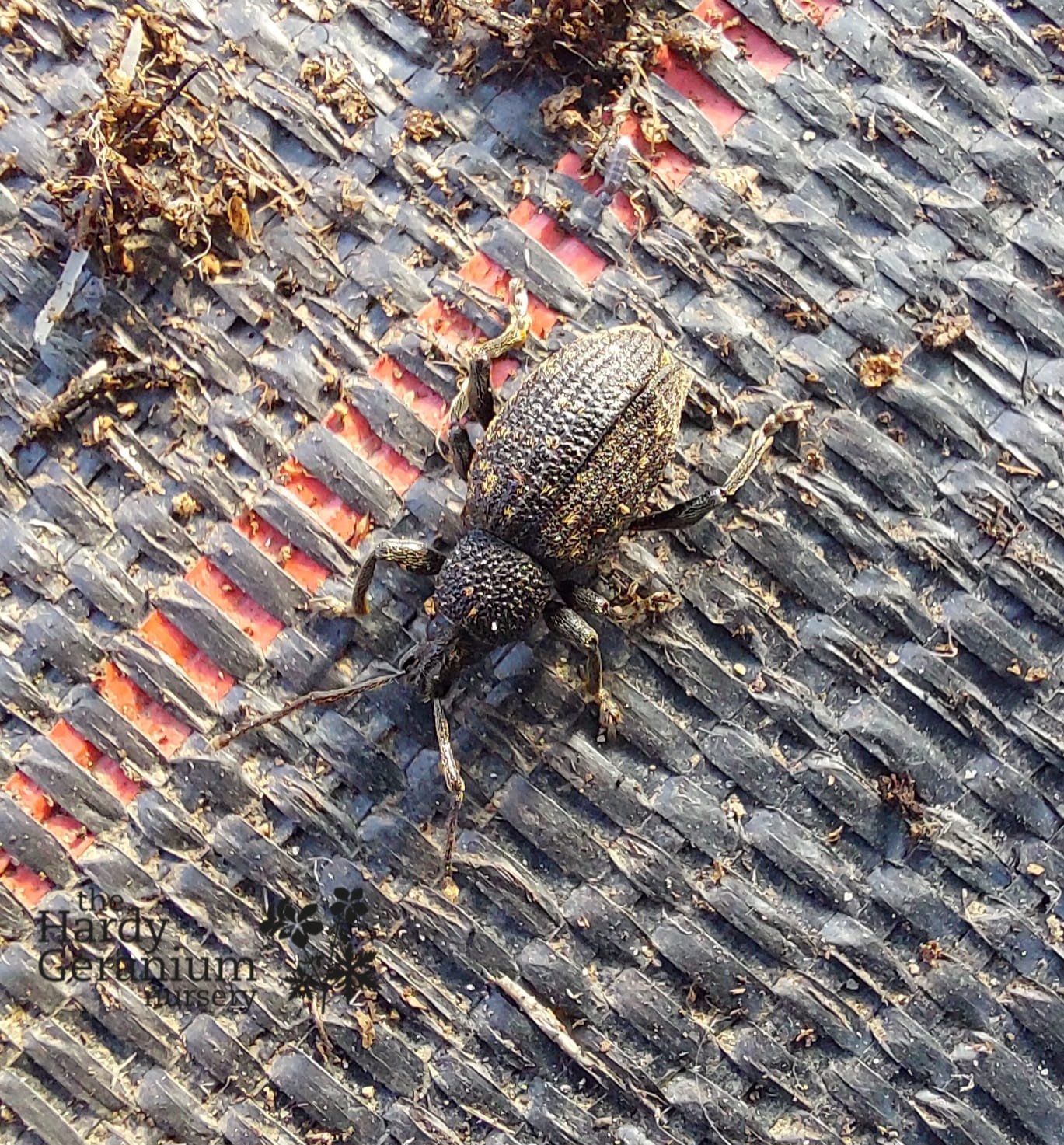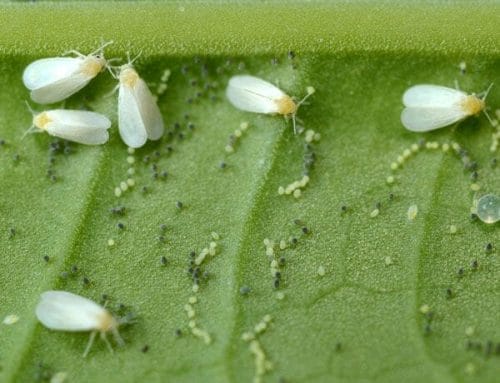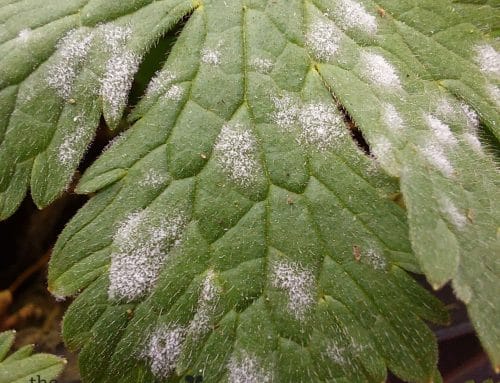Black vine weevil, also known as Otiorhynchus sulcatus, are small, black beetles that can cause significant damage to a wide variety of plants, particularly those grown in greenhouses and nurseries. These pests have a distinctive curved snout and can be found feeding on the leaves, stems, and roots of plants.
Black vine weevil are all female and all are capable of laying eggs. They are flightless and mostly nocturnal. If the adult beetles are disturbed from their daytime hiding place they will fall, lying on their backs with their legs crunched up, appearing dead. Do not be fooled. Crush that beetle immediately!
One of the most recognizable signs of a black vine weevil infestation is the characteristic “notching” of the leaves, caused by the adults feeding on the leaf margins. The larvae, which are white and legless, can also cause significant damage by feeding on the roots of plants.
Black vine weevils are most active during the spring and summer months, and they can lay up to 600 eggs per season. The eggs are laid on the soil surface near the base of the plant, and they hatch within 2-3 weeks. The larvae then begin to feed on the roots of the plant, causing damage that can lead to wilting and even death of the plant.
Control of black vine weevils can be challenging, but there are several methods that can be effective. Cultural control methods such as sanitation and crop rotation can help to reduce the population of black vine weevils by removing potential breeding sites and disrupting their life cycle.
Beneficial insects such as nematodes, parasitic wasps and predatory beetles can also be used to control black vine weevils. These insects can help to reduce the population of black vine weevils by preying on the eggs and larvae.
Another method of control is to use sticky traps to capture adult weevils before they have a chance to lay eggs. These traps can be placed near infested plants and should be checked and replaced regularly.
Cultural control methods such as sanitation and crop rotation can also be used to help prevent the spread of black vine weevils. This can include removing any infested plants from the area and keeping the area clean and free of debris.
Chemical control is another option for controlling black vine weevils, but it should be used with caution. There are several insecticides that are approved for use in the UK to control black vine weevils. It is important to choose one that is specifically labelled for use against black vine weevils and to follow all label instructions carefully. Always read the label and follow the safety and application guidelines.
It’s important to note that chemical control should be used as a last resort and integrated pest management (IPM) approach is recommended which includes the combination of physical, cultural and biological methods as well as chemical treatment when necessary. In addition, it is important to monitor the infestation regularly to ensure that control measures are working effectively.
In summary, Black Vine Weevil is a common pest in the UK that can cause significant damage to plants. By practicing good cultural control methods, using beneficial insects, sticky traps and chemical control methods, it is possible to control the population of these pests. Remember that the most effective approach to controlling black vine weevils is a combination of methods, and monitoring the infestation regularly is key to success.
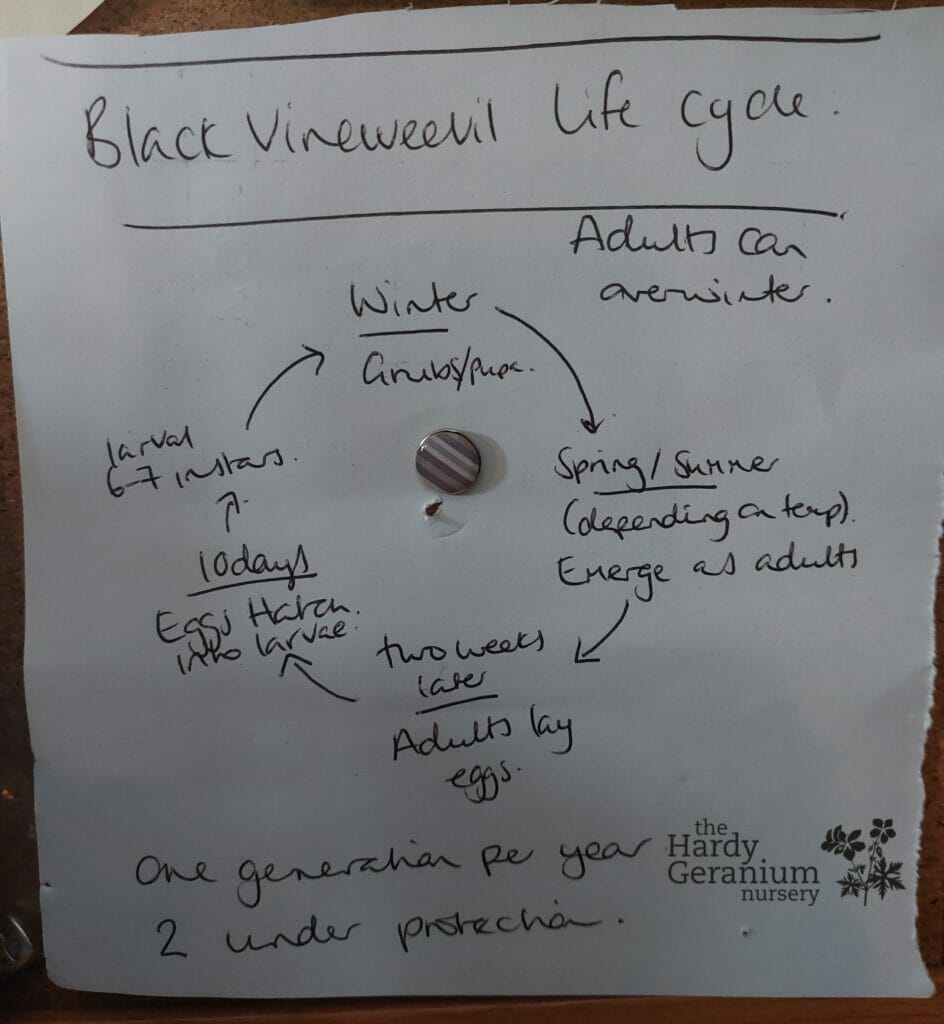
The best way to prevent any pest taking hold in your garden is to understand their lifecycle, this gives us a better insight as to when to most effectively use appropriate treatments and preventions.

Adult Black Vine Weevil. They are well camouflaged and can be easy to miss, especially amongst compost and leaf litter.

Black Vine Weevil Grub. Creamy white body with brown head. Approximately 10mm long. Usually in a C shape and will easily roll away if disturbed in soil, they cannot crawl away very fast though.
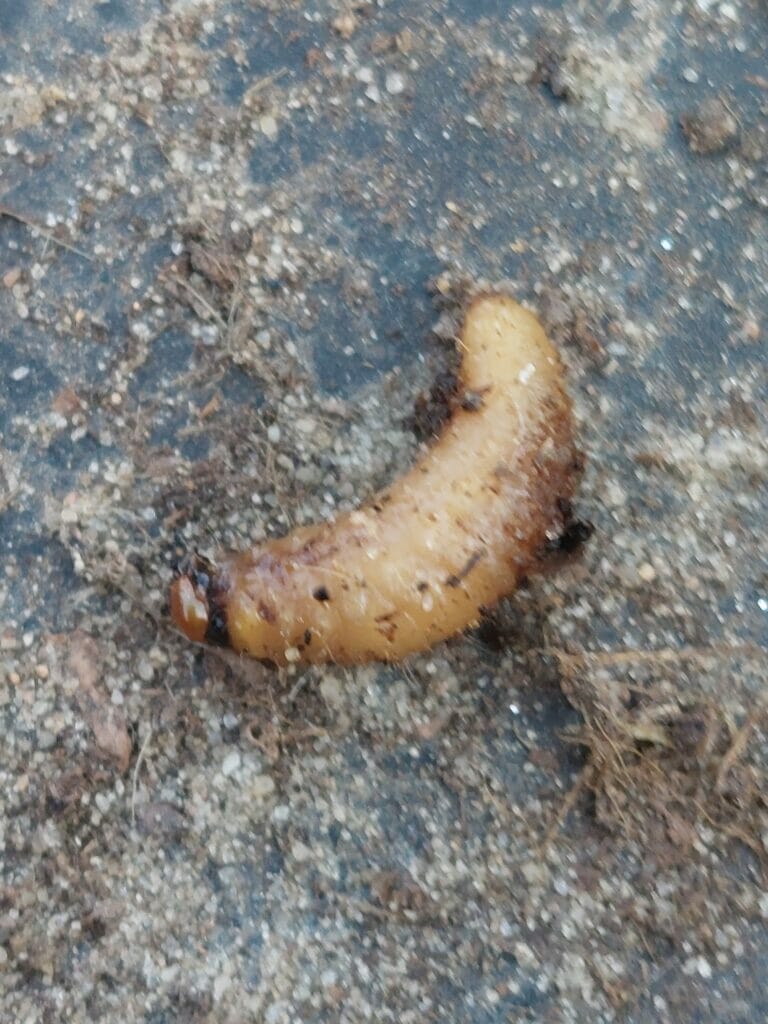
A dead Black Vine Weevil Grub that has been infected with nematodes.
Article written in association with ChatGPT

